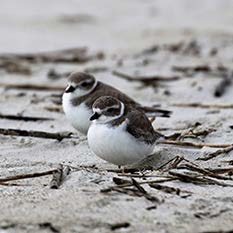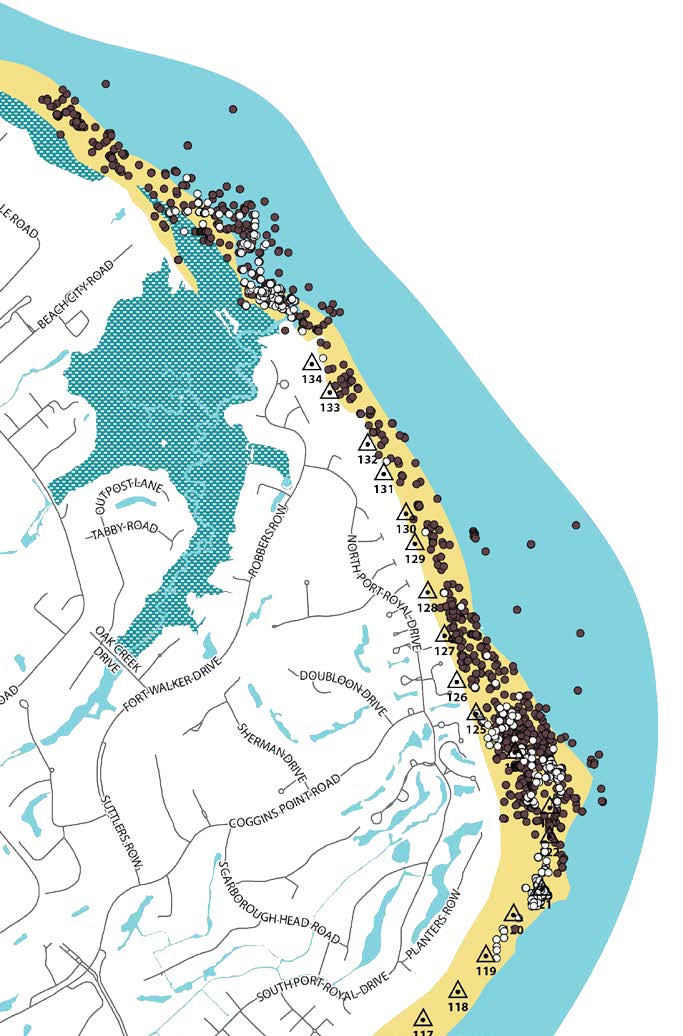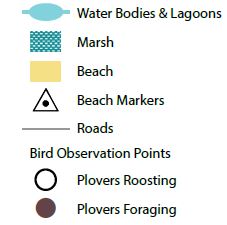NR
Piping Plovers
These small shorebirds, Charadrius melodus, call the Island home during the winter months. They have sand-colored plumage on their backs and crown and white underparts. During winter, the birds have pale yellow legs and the bill becomes mostly black, and the black bands around the neck and across the forehead fade.
The Great Lakes population was federally listed as endangered, and the Atlantic coast and Northern Great Plains populations were federally listed as threatened in 1986. This includes their wintering range on the Island. There are usually about 12-15 birds who spend the winter here, with others that stop over briefly while migrating to other areas.
Town staff monitor the wintering roosting (resting) grounds and conduct detailed surveys to assist the United States Fish and Wildlife Service (USFWS) in properly assessing the health of the population.
Signage is maintained around critical resting areas, which are primarily on the north end of the Island in beach and dune areas adjacent to Port Royal and Mitchelville. If you see signs, stay out of marked areas and keep dogs on leashes at all times.
Flushing shorebirds and forcing them to fly causes them to use essential energy supplies and compromises their ability to successfully migrate.
1,007 Total Roosting Observations 2009 to 2020

Piping Plovers roosting


Figure 2.13, Piping Plovers Observations 2009 to 2020